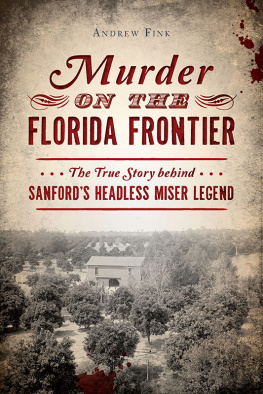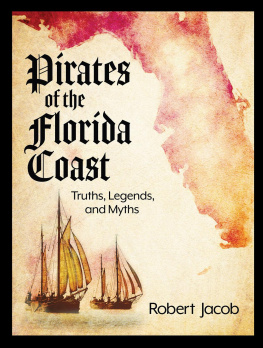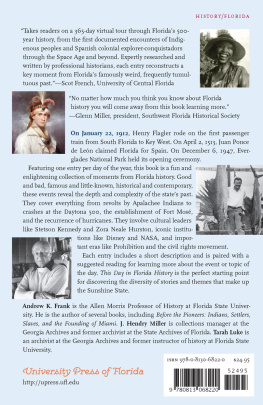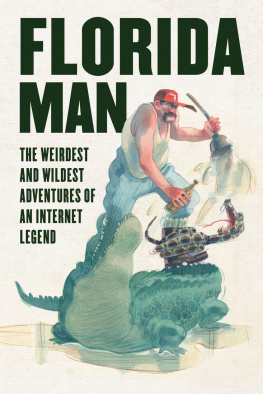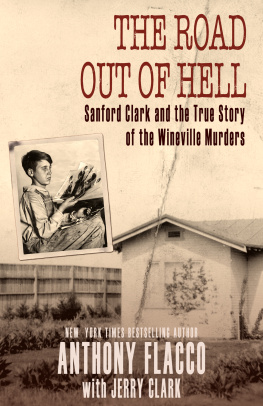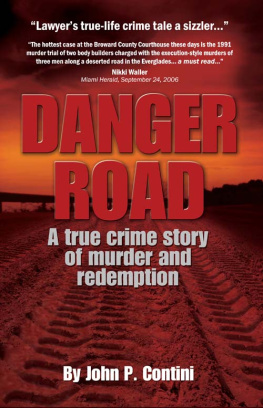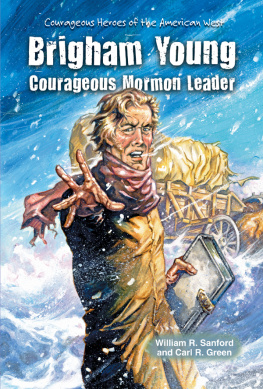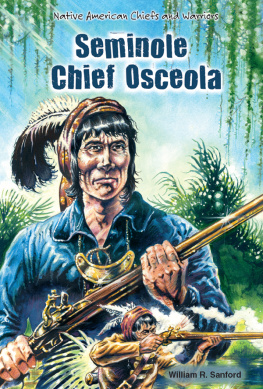
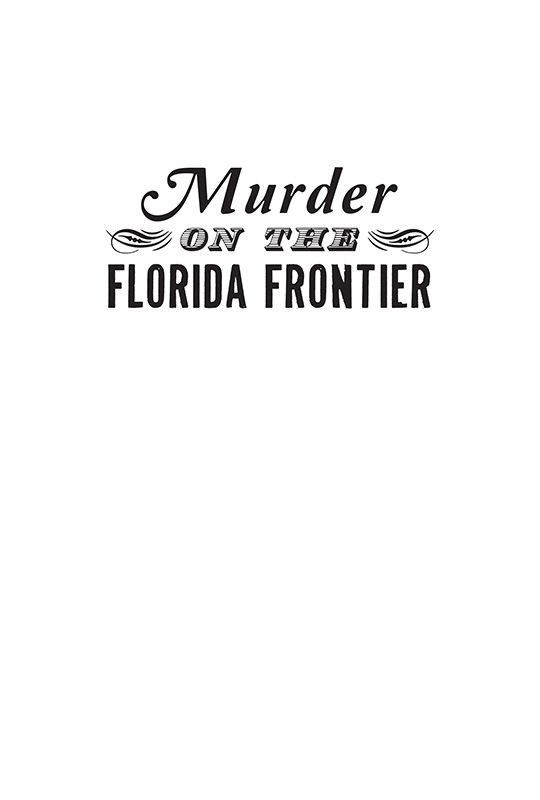

Published by The History Press
Charleston, SC
www.historypress.com
Copyright 2018 by Andrew Fink
All rights reserved
First published 2018
e-book edition 2018
ISBN 978.1.439.66569.5
Library of Congress Control Number: 2018948027
print edition ISBN 978.1.46713.939.7
Notice: The information in this book is true and complete to the best of our knowledge. It is offered without guarantee on the part of the author or The History Press. The author and The History Press disclaim all liability in connection with the use of this book.
All rights reserved. No part of this book may be reproduced or transmitted in any form whatsoever without prior written permission from the publisher except in the case of brief quotations embodied in critical articles and reviews.
CONTENTS
ACKNOWLEDGEMENTS
Of course, no book of any sort is written alone, and this one is no different. I cant acknowledge and thank enough the staff at the Sanford Museum for helping me discover this story, research it and bring it to these pages. Curator Alicia Clarke and museum assistant Brigitte Stephenson were invaluable on so many different levels that listing them all would be impossible. So I say thank you.
There are many others who assisted me in researching names or tracking down people and places that have been lost to time. Andrew Mussell, archivist at the Honourable Society of Grays Inn, was extremely helpful in providing information about members of the Inn, life in nineteenth-century English society and London in the 1860s. Miriam Gan Spalding at the State Archives of Florida rendered invaluable assistance in locating and reviewing the transcript material from the murder trial detailed in these pages. Adam Ware, historian and research librarian at the Orange County Regional History Center, and Bennett Lloyd, coordinator of the Museum of Seminole County History, both suffered my endless questions and inquiries and tolerated my visits, and for that I am grateful.
INTRODUCTION
The shelves of the research room of the Sanford Museum are laden with all manner of books, binders, maps, folders, boxes, charts and more books. If you sit quietly, you can almost hear the wooden shelves groan and the reference materials cry out for more space. Or maybe Im a little crazy and think I hear things.
Its not a large room to begin with, especially for housing the historical archives of a city that by Florida standards is among the older ones. And it must share space with stacks of chairs, crumbling city directories from 1889 to 1928, a copy machine, computers and several large museum artifacts that have not quite found a home yet.
Its among these arcana that I found the strange tale of Samuel McMillan and Archibald Newton.
Or rather, it found me.
Sometime in autumn 2016, while at the museum researching another book, I came across the story of the murder of a local orange grower, Samuel McMillan. He disappeared at the end of September 1882, mystifying friends and neighbors. Several weeks later, his headless, mutilated body was discovered in a nearby lake. Even though they didnt have any direct evidence, residents of the small, tight-knit community quickly accused a pair of outsiders, young Englishman Archibald Newton and his wife, Kate.
This was in a time when Florida was just getting its footing after the horrors of the American Civil War and the difficult period of Reconstruction.
Settlers, farmers, swindlers, opportunists and former soldiers from both sides were arriving in droves. Citrus production was in full swing, and as we shall see, Victorian ideals, mores and police work were in full effect. This also was the time of great capitalist expansion on this last of the great American frontiers, when, much like the American West, railroad magnates, land speculators and the Colt revolver reigned supreme.
As I dug deeper into this murder and its cast of characters, I was too intrigued to simply put it back on those crowded wooden shelves. Who was Samuel McMillan? Why did his neighbors accuse Newton? What was a young English lad from a wealthy family doing on the Florida frontier anyway? The information the museum had was tantalizing, but it scratched only the surface. Not one to miss a good story, I eventually put all the research materials of my initial book into a binder, closed it and focused on finding out what happened to McMillan and his apparent murderer.
I think the Archibald Newton murder story was here waiting for you, museum curator Alicia Clarke told me early on. I think he wanted you to find him and tell his story.
History has a way of doing that, of speaking out, of wanting to be told. And it often does so with a touch of the dramatic: I later realized that I had discovered this story and turned full attention to it on October 17which is exactly the 134th anniversary of the discovery of McMillans corpse (October 17, 1882). Cue the spooky music.
OKso 134 years isnt exactly a dramatic milestone, and it isnt the round-numbered 100 or 150 years we normally celebrate, so spooky music may not be warranted. But discovering this story on the same day of the month the victims body was found is dramatic, you must admit.
I also soon realized that I lived less than three miles from where all the main players had lived and worked in the 1880s. I frequently drove by the place where Samuel McMillans house had stood, pumped gas at a 7-11 where his orange grove once blossomed and used the highway that now frames the events of this tale. In short, I had lived for ten-plus years at the epicenter of a century-old mystery, and didnt know it.
As I read more about the doomed McMillan and his accused killer, the more I became convinced this was a story that needed to be told. With events set in places ranging from the vibrant orange groves of Sanford, Florida, to the posh precincts of international financiers in London, the story has depth. In fact, our story originates even farther afield, in the Himalayan foothills of the extreme reaches of the British Empire at the height of its power. Throw in some poison, hordes of cash and a decomposing body, mix it all with Victorian detective work straight out of the pages of Sherlock
Holmes, and we have a story worth reading.
Heck, theres even a ghost story for good measure.
This story also shows just how history can reveal itself. To tell this tale, Internet research was key for family history, maps, place names and so forth. But contrary to what many people think, the Internet doesnt have everything.
As mentioned, the staff at the Sanford Museum was invaluable. I also researched paper archives at the Seminole County Museum and the Orange County Regional History Center. I waded through twenty-plus years of reports and records of the Florida Land and Colonization Company. I enlisted the help of archivists at several institutions to physically search their records, including Yale University, the Florida Archives, Grays Inn of Court and a retired lawyer who claimed to have microfilm of every criminal trial in Orange County, Florida, from 1846 to 1913 stored in the attic of his cabin in North Carolina.
And most important of all, after much searching, I located the actual transcript of Newtons 1883 murder trial in a dusty, timeworn box among the shelves of the Florida state archives. The longhand script (no typewriters in 1883, thank you very much!) and the yellowed tri-fold pages of motions and court filings were a treasure-trove of information and enabled me to tell you this story. In fact, its enabled Archibald Newton, Samuel McMillan, his friend Charles Saint, Edgar Harrison the coroner, Constable William Sirrine, Tony Fox, who found the corpse (and hauled it by rope), and all the participants to tell their story directly to you.
Next page
